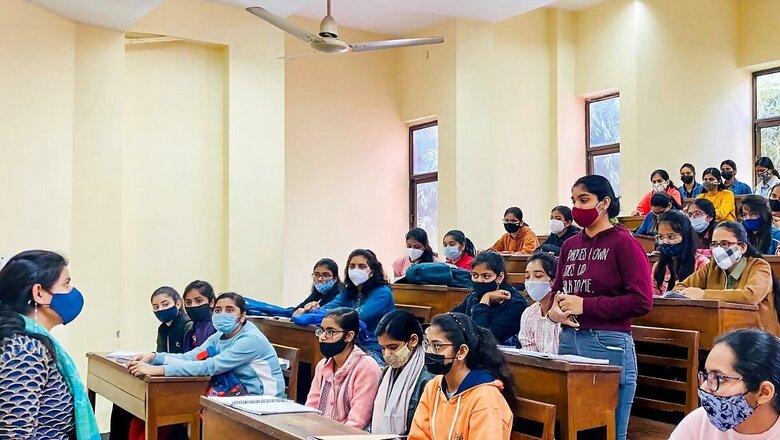
views
UGC has released draft guidelines for incorporating the Indian knowledge system into the higher education curriculum. As per the guidelines, UGC has asked all universities and institutions that students enrolled in PG and UG courses must be encouraged to take IKS courses which will amount to at least five per cent of the total mandated credits.
UGC NET 2023 Result LIVE Updates
The guideline states that students who are enrolled in UG programmes in medicine may take a credit course in the first year on Indian Systems of Medicine, which will provide them with a “basic understanding of Ayurveda, Yoga and Naturopathy, Unani, Siddha, and Homeopathy” (NEP 2020), which are continuing traditions of medicine that still attend to the health needs of large sections of the Indian population. During the second year, the students may take a two-semester credit course on the Theory and Practice of any one of the Indian systems of medicine, such as Ayurveda, Siddha, Yoga, etc
The guidelines mention a few model curriculum courses that can be incorporated for both UG and PG in universities. For example, “The Foundational Literature of Indian Civilisation,” which includes contents of the Vedic Corpus, the Itihasas – Ramayana and Mahabharata, and their important regional versions, the Puranas, the role of Itihasas and Puranas in understanding the Vedas. foundational texts of Indian philosophies, including the Jaina and Bauddha, foundational texts of Indian Religious Sampradayas, from the Vedic period to the Bhakti traditions of different regions.
The Vedangas and other streams of the Indian Knowledge System, the six Vedangas -Siksha, Vyakarana, Chandas, Nirukta, Jyotisha, and Kalpa. Other streams of the Indian Knowledge System such as Ayurveda, Sthapatya, Natyasastra, Dharmasastra, Arthasastra, etc.
Also read| Expertise In Puranas, Vedas Can Be ‘Creditised’ By Students Under New National Credit Framework
The guidelines also mention content that needs to teach on Indian astronomy. One such chapter will be on Lagna and its computation. “Introduce the concept of Lagna, and how non-trivial a problem it is to determine it precisely also point out how this is deeply connected with fixing times for various social and religious functions such as marriage, bring out the connection between its computation and the computation of declination, Cara, etc., that would have been discussed before, explain how this can be determined ‘reasonably’ accurately using interpolation, outline more precise formulations that have been given by later astronomers by introducing the notion of Kalalagna,” says the draft guideline.
Read all the Latest Education News here



















Comments
0 comment